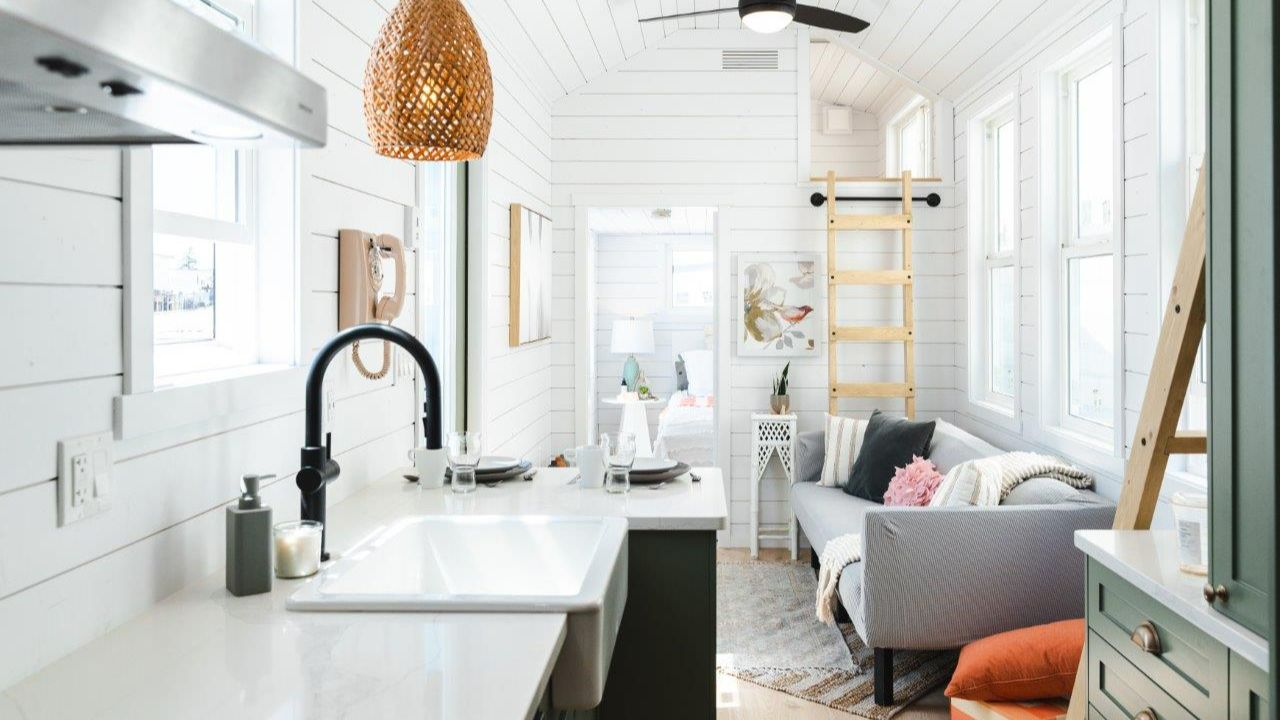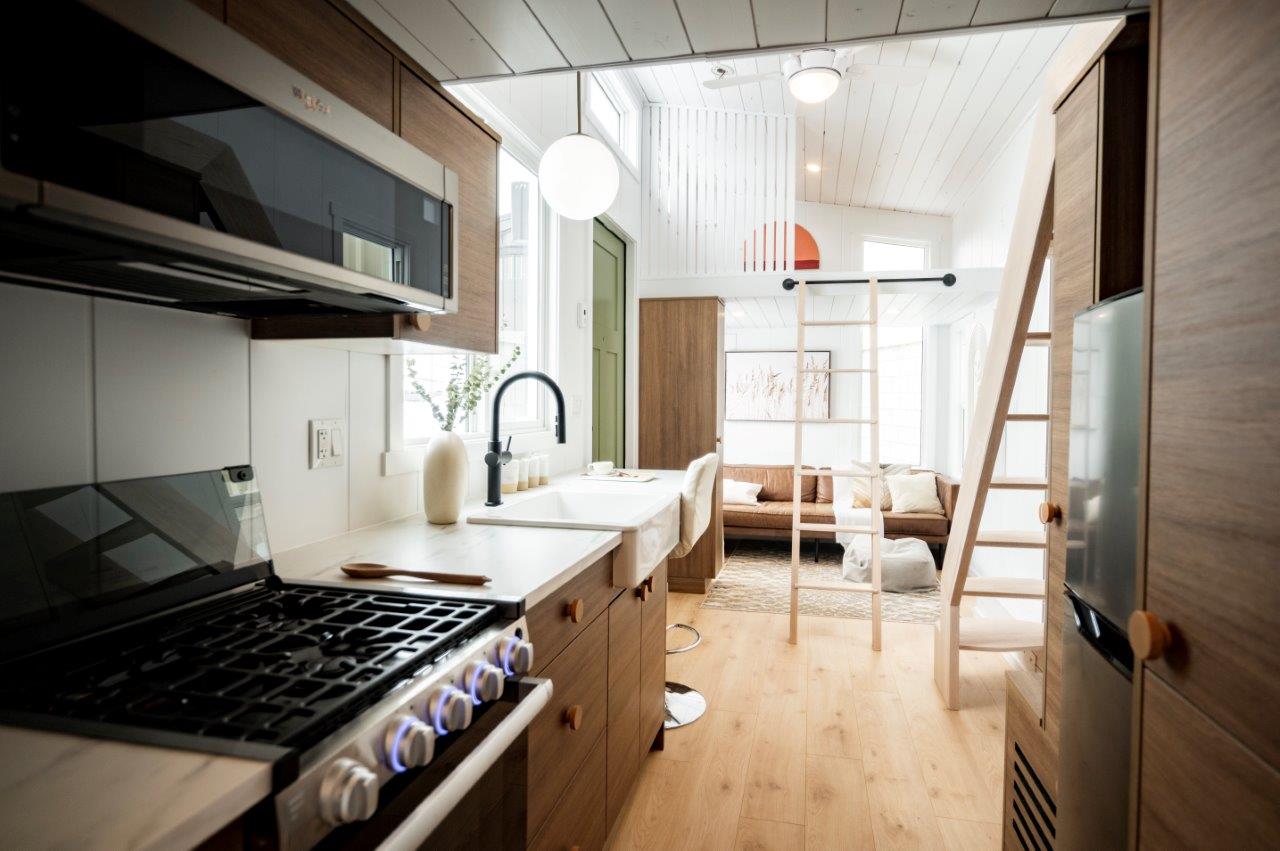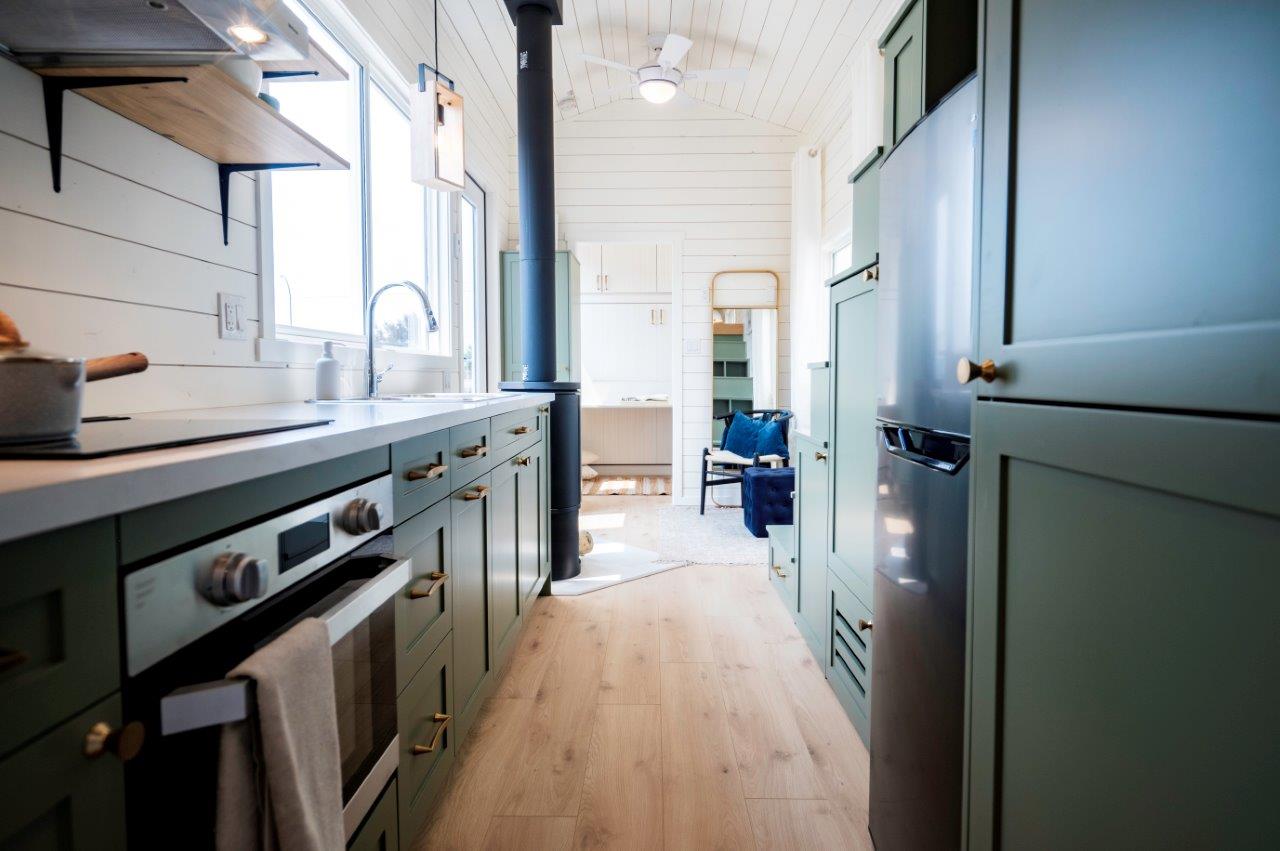The What, Where, and Why of Your Tiny Home Journey
Jun 28, 2023
Have you been consuming tiny home content, but find yourself unsure about what the tiny home lifestyle would truly mean for you? Perhaps you've had dreams at night, envisioning yourself blissfully nestled in your own tiny home, but you're unsure about the practical steps to take in order to turn that dream into a reality.
Our goal is to guide you down the path of your unique tiny home journey. Whether you're a curious enthusiast seeking clarity and guidance or someone ready to embark on their very own tiny adventure, we're here to assist you every step of the way.
If you're still in the contemplative phase, absorbing information, and exploring the possibilities, we understand that choosing a tiny home is a significant decision that requires thoughtful consideration.
On the other hand, you might already have a tiny home and find yourself basking in the joy of your cozy living space, it's only natural to want to share that experience with others. If your friends or loved ones are captivated by your tiny lifestyle and harbor aspirations of their own, we can assist you in becoming a knowledgeable advocate and guide for them. With our help, you can offer advice, share your own experiences, and provide resources to support their journey towards their very own tiny haven.

What Tiny Is Right For You?
First and foremost, one of the most crucial decisions you will face when embarking on a tiny lifestyle is determining the type of tiny home that suits your needs and desires. Tiny homes come in a diverse array of shapes and sizes, making it essential to have a clear understanding of the specific type of home that aligns with your vision.
A tiny home is typically defined as a dwelling that spans 500 square feet or less. Within this category, there are several options available to cater to different preferences and lifestyles. Let's explore a few of these choices:
- Tiny Home RV (Or a THOW - Tiny Home on Wheels)
- Although technically certified for seasonal use, the THOW are often built to exceed National Building Codes. This is the most common type of tiny home, certified as an RV, 8.5ft wide, and are road legal with no permits needed. They make the perfect Tiny Home Vacation Cottage or Tiny Home RV in a permanent camping spot.
- Tiny Home Park Model RV
- Tiny Home Park Models are 10 feet wide and are not road legal without a permit. These tiny's must have special permits to be towed and are best for travelling only occasionally throughout it's lifetime. Otherwise they are built to the same standards as a Tiny Home RV!
- Tiny Home on Foundation
- These Tiny's can be built on site or in a factory and craned into place. They will follow all local building codes and will be permanently fixed to a foundation and tied into the grid. They should be certified to National Building Codes as a dwelling and will need to be permitted. They can often be called Secondary Dwelling Units, ADU's, Granny Pods, or laneway housing in larger centers. They can also be stand alone single dwellings. You will need to check for minimum square footage bylaws in the municipality that you are wanting to put your Tiny in.
- Temporary Dwelling Unit
- This is a home designed to be in a location for a limited time. These Tiny Homes are great for working quarters or on lease land. They will be built to National Building Codes and will need a temporary permit. These homes may be built on a skid.
Where Are You Going To Put Your Tiny?
Once you have delved into the motivations behind choosing a tiny lifestyle, it's crucial to focus on another important decision—your location. Determining whether your tiny home will serve as a vacation cottage or a more permanent residence will guide your search for the ideal spot.

Reflect on your vision for waking up each morning. What surroundings do you dream of? Whether it's a serene natural landscape, a bustling cityscape, or a close-knit community, envisioning your ideal morning can help narrow down potential locations.
Next, assess your flexibility regarding the location of your tiny home. Are you open to various regions or cities, or do you have specific preferences? Consider factors such as climate, proximity to amenities, and access to your desired lifestyle and activities.
Another aspect to consider is whether you prefer to own or rent land for your tiny home. Ownership offers stability and the freedom to customize your surroundings, while renting provides flexibility and fewer long-term commitments. Evaluate which option aligns best with your goals and financial situation.
If you're considering a tiny home on a foundation, familiarize yourself with any special requirements or regulations imposed by your municipality. Some areas have specific rules governing the construction and placement of tiny homes, so it's essential to understand and comply with these guidelines.
Furthermore, explore the possibility of joining a tiny home community. These communities offer a supportive network of like-minded individuals and can provide a sense of belonging and shared resources. Research existing communities that align with your values and preferences to see if they might be a good fit.
Ultimately, selecting the right location for your tiny home is a deeply personal decision. Take the time to consider your long-term vision, preferences, and practical considerations. By aligning your location choice with your lifestyle goals, you can create an environment that enhances your tiny living experience.
What Is Your Why?
When considering the transition to a tiny lifestyle, it's crucial to reflect on your motivations and reasons for choosing this path. By examining your current lifestyle and envisioning your future in a tiny home, you can gain valuable insights to guide your decision-making.

Begin by closely examining your daily routines and habits within your current living space. Track how you utilize each area throughout the day and identify those spaces that hold significant importance to you. These might be places where you find solace, work productively, or spend quality time with loved ones. Consider whether these spaces can be incorporated into your downsized living arrangement.
Additionally, think about your top three needs—the essential elements you cannot live without. These needs will vary for each person, encompassing factors like natural light, storage, or a connection to nature. Identifying these non-negotiable requirements ensures that your tiny home meets your fundamental needs and sets the stage for a fulfilling lifestyle.
As you evaluate your motivations, also consider the items and routines you wish to modify or eliminate. This could involve letting go of possessions that no longer serve you or adjusting routines that no longer align with your values. Simplifying your life and creating space for meaningful experiences can be liberating.
While reflecting on your motivations, it's essential to consider both the practical and emotional aspects of the tiny lifestyle. Assess the financial savings, reduced maintenance, and environmental benefits that a tiny home offers. Reflect on the potential trade-offs and whether they align with your long-term goals.
Equally important are the emotional rewards you seek from living in a smaller space. Whether it's a stronger connection to nature, a simpler lifestyle, or increased opportunities for exploration, understanding these emotional benefits will shape your tiny home design and lifestyle choices.
Remember that the journey toward a tiny lifestyle is deeply personal and unique to you. Embrace the opportunity to redefine your relationship with possessions, space, and the way you live. While drawing inspiration from others who have embarked on similar journeys, allow your own values and aspirations to guide your decisions.
Want to take some actionable steps towards living your tiny dream?
- Build the tiny home of your dreams with our estimate builder
- Book a discovery call
- Find out if you qualify for financing
Until next time,
-Jen

